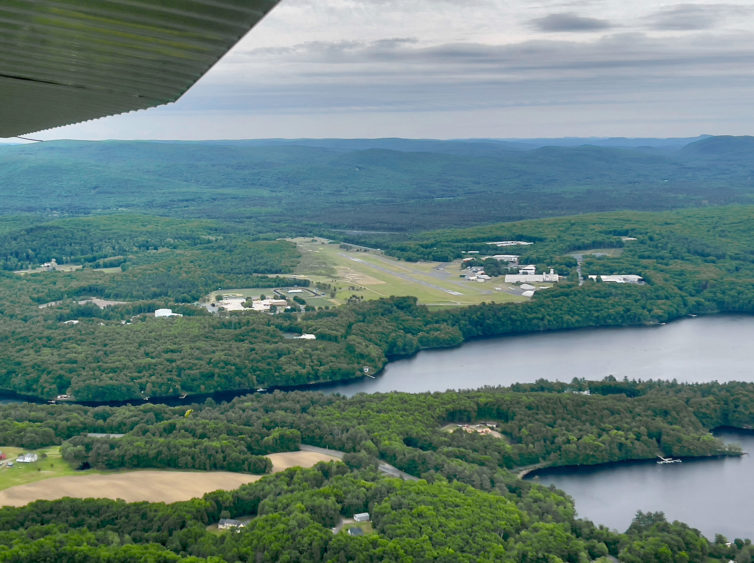
0B5, aka Turners Falls Municipal Airport in Turners Falls, Mass. This is the airport where my AvGeek obsession first took flight, and I finally got to land and take off there this month. – Photo: Katie Bailey
This is a continuation of my multi-part series on learning to fly. You can read the whole Fly With Francis series here.
My obsession with airplanes is directly attributable to a very loving grandmother’s attempts to settle down two very rambunctious young brothers. She’d drive us to nearby Turners Falls Municipal Airport to get ice cream and watch planes carrying parachutists from the local skydiving club while sitting on the hood of her beige 1969 VW Beetle. The high school I attended is located adjacent to the airport as well.
So, this spring, nearly 50 years later, with my relatively new pilot certificate in hand, I traveled back home and rented a Cessna 172SP from Monadnock Aviation in Keene, NH. Standard rental restrictions, such as a requirement for multiple checkout flights and having a dedicated rental insurance policy, made it easier to simply ask the folks at Monadnock to assign me a flight instructor to fly along on the trip to negate the need for the checkouts.
-
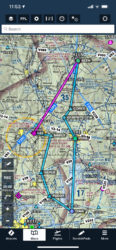
-
The detail view of our official route, which was roughly 100 nautical miles and took about 90 minutes including stopping at KORE and 0B5. Foreflight screenshot
-
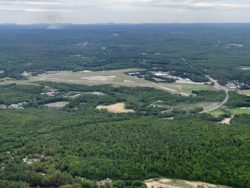
-
KEEN airport in Keene, New Hampshire. Katie Bailey photo
-
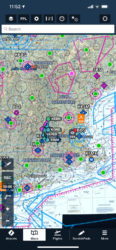
-
This is a zoomed-out view for context. Foreflight screenshot. Foreflight screenshot
I’d planned out the route in advance, so I was well prepared for the flight. We’d start and end at Keene airport (KEEN), fly south over the Quabbin Reservoir in central Massachusetts, land at Orange Municipal Airport (KORE), fly northwest to my collegiate alma mater (University of Massachusetts Amherst), land at Turners Falls Municipal (0B5), and fly back to KEEN.
It was a pleasant day, with a very high overcast, light winds, and smooth air. I’d never flown over this area in a small plane, although I’d seen it from 20,000+ feet out the windows of commercial jetliners plenty of times flying home for visits. Trust me when I tell you the views from 3,500 feet are much better.
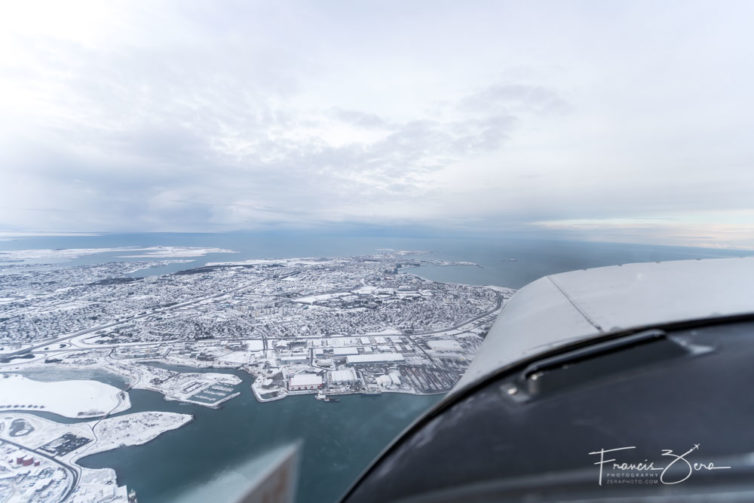
Flying over Reykjavik in a PA28
This is a continuation of my multi-part series on learning to fly. You can read the whole Fly With Francis series here.
The flying weather continues to be dismal in Seattle – I’ve lost track at how many training flights have been canceled due to low ceilings, low visibility, potential icing, etc. – I stopped counting after 14. Even by Seattle standards, we’ve had an exceptional stretch of bad weather this winter.
However, during a recent trip to Iceland with Icelandair (watch for upcoming stories about their maintenance operations, fleet and route plans, plus an economy-class flight review), a series of fortuitous introductions led to my being able to do something I’d only dreamt of – fly in Iceland.
That experience more than made up for all the weather-based frustration with my stalled Seattle flight training.
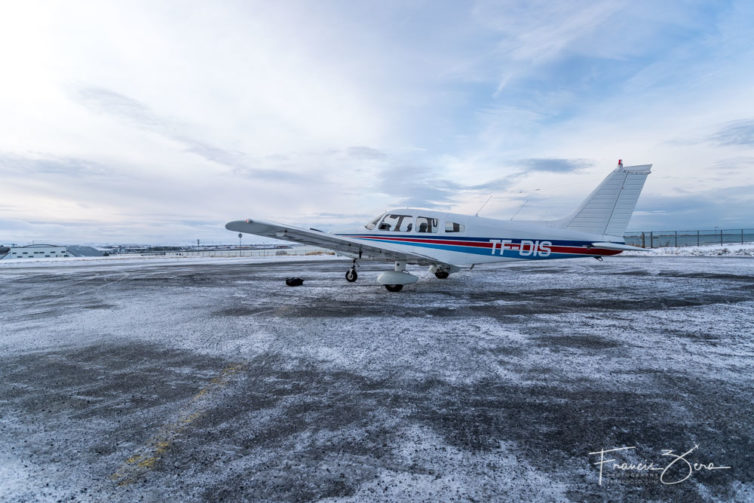
The Piper PA-28-151 Cherokee Warrior we flew that day
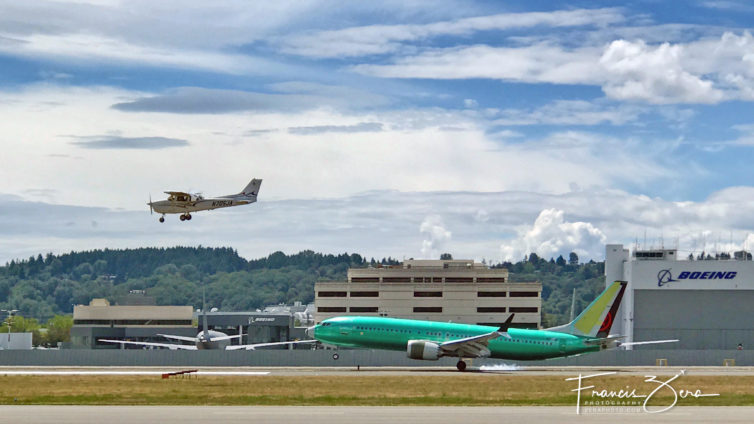
Always lots going on at BFI – that’s an Air Canada B737 MAX 8 fresh from the Renton plant, landing next to one of Galvin’s C172s
This is a continuation of my multi-part series on learning to fly. You can read the whole Fly With Francis series here.
A few weeks ago, I completed the written pre-solo exam and Cessna 172S checkout paperwork. Both tests are specific to Galvin’s flight school/rental program. The former test covered lots of flight-safety topics, while the checkout test covered aircraft-specific things like performing weight and balance calculations, flight planning, fuel consumption, takeoff and landing distances based on hypothetical weight and balance figures, and so on.
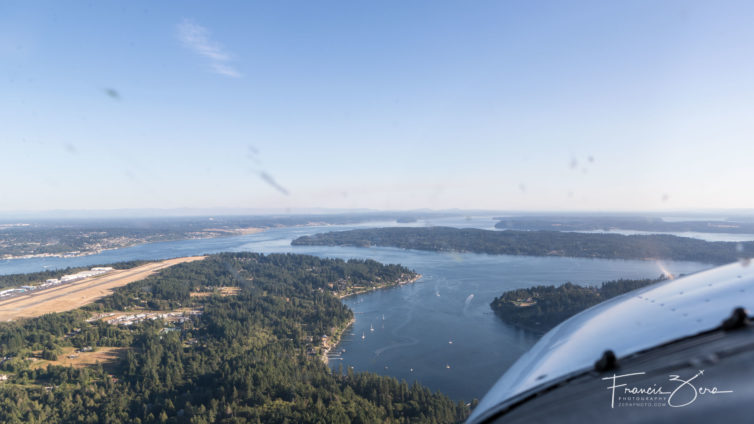
Taking a spin around the west side of TIW (Tacoma)
I’ve had to back off the frequency of flight training a bit; this is definitely an expensive exercise. I’ve gone from flying two or three times a week to three times every two weeks to stretch the budget a bit. This is, based on conversations with fellow students, also nothing out of the ordinary.
That pacing, though, has made me feel like my skills have been stagnating a bit. I had a frustrating flight a week or so ago, where nothing seemed to go smoothly and my memory of the required procedures needed refreshing by the instructor, rather than my just doing them without prompting; it was disheartening.
There have been a couple of flights like that.
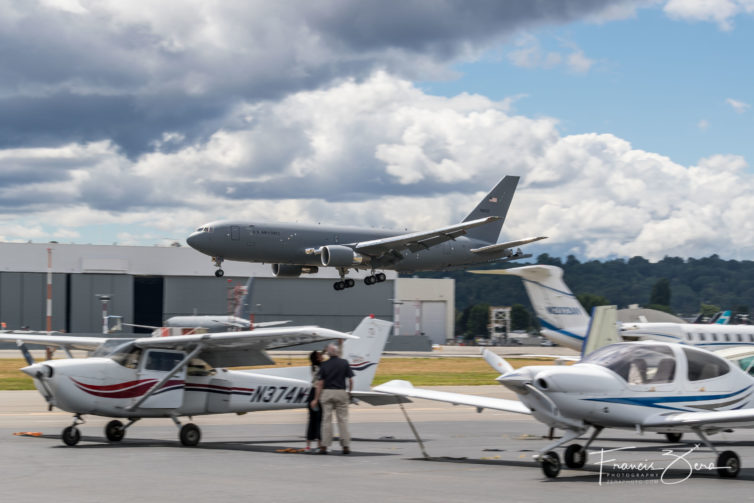
I told you Boeing Field’s airspace was busy. That’s a USAF KC-46 Pegasus tanker returning from a test flight and a biz jet taxiing to the right; Galvin’s ramp is in the foreground.
This is a continuation of my multi-part series on learning to fly. You can read the whole Fly With Francis series here.
I passed the FAA written exam two weeks ago. I’ve never been so excited about what amounts to a B+ on a test. But it was a solid pass, as a 70 (or the equivalent of either a C or C-, depending on where you’re from) is the minimum required.
Those free online practice tests are really helpful for exam prep, but I credit the combination of dedicating tons of spare time to studying, along with all of the knowledge and tips shared by Robin, our most excellent ground instructor.
You can’t just toss the books after the exam, though – keeping on top of this stuff seems to be a never-ending task, as several more exams of differing complexity await, as well as a series of so-called stage checks. These are flight-skill milestones, the first of which is probably the most daunting stage 1, which, if successful, sets you up to do your first solo flight, and the checkride done with a different CFI for both safety and evaluative reasons.
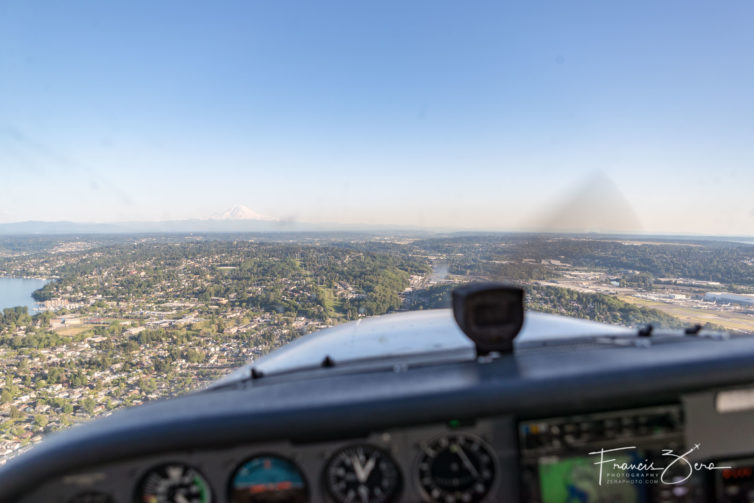
In the traffic pattern at Boeing Field. The view doesn’t suck – that’s Mount Rainier on the horizon, and the airfield is on the lower-right side of the image.
This is a continuation of my multi-part series on learning to fly. You can read the whole Fly With Francis series here.
After six weeks, which went past in a seeming eyeblink, I’ve completed ground school. Drinking from a fire hose is an appropriate analogy. Still, I passed all three written stage tests, and just passed the written comprehensive finals, which consisted of two separate tests over two class sessions. Next up will be scheduling and taking the proper FAA written exam before all this hard-earned info leaks out of my brain.
I’ve also been flying quite a lot with my CFI (aka my instructor) – two or three hours a week on average. I’m learning new skills like crazy, but am also burning through money like a Silicon Valley startup. In contrast with most of my stories, I don’t have very many photos to share for this series, not at least so far. Learning how to fly is hard, and if I’m on the controls the whole flight, there’s no time for taking photos. I’m considering finding a way to mount a GoPro either inside or outside the plane so there’s at least some video to share.
Anyway, we started doing pattern work a week or so ago; that means pretty much flying in the airport’s prescribed traffic pattern, doing a touch-and-go, then re-entering the pattern. Lather, rinse, repeat. At Boeing Field (BFI), you can get about six laps around the pattern into a one-hour lesson.
The first time we did this, it was utterly demoralizing. I’m flying a plane, which is amazing and fun, but landing is *hard*. Especially when dealing with BFI’s notoriously squirrelly crosswinds.









